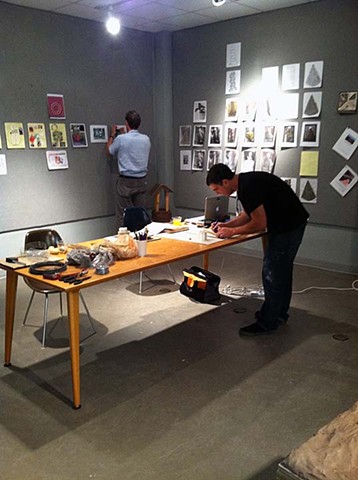Georgia South Western University
In 2013 and 2014 John Parris collaborated via exchanged emails, images, and phone calls. The subject of our correspondence was wishing wells, which we began discussing after noticing them on a car trip. Replicas of wishing wells can be found on the lawns of homes and businesses. Some are generic decorative lawn ornaments. Others are vernacular architecture, lovingly crafted by homeowners, expressing their domestic sensibilities. Although the classical well structure has outlived its usefulness, its form lives on as a symbol of the hopeful, the handy, and the house-proud. However, over time many wishing wells transform, through the accretion of new components or the entropy of neglect. These transformations are what inspire us.
As sculptors, we find the structural aspects of the wells evocative: the bottom of masonry or wood, the roof with its miniature post and beam structure, and the bucket of steel or wood on a rope or chain. Beyond these physical attributes, the cultural and emotional associations of wishing wells present an interesting context to explore the meanings of the forms. We’re aware of the challenges: kitsch can be difficult to transcend.
The artistic challenge we wish to address is twofold. First, we need to develop our collaborative process. We want to go from the call and response of correspondence to a direct improvisational mode of physical engagement with materials in real-time. Second, we intend to operationalize our ideas to deconstruct, recreate, and transform the well to create new images and sculptural forms.
